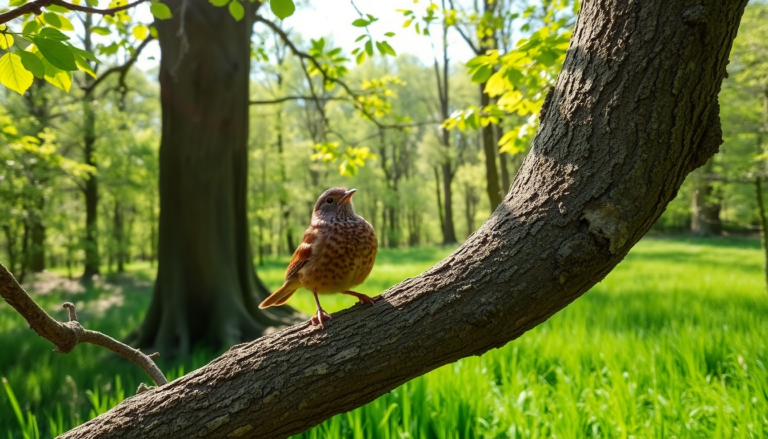Argomenti trattati
- The Enigmatic Journey of the Wood Thrush
- Understanding Wood Thrush Migration
- Utilizing Technology for Tracking
- On-the-Ground Tracking Efforts
- Connecting Communities Through Conservation
- The Conservation Challenges Ahead
- Looking Ahead: Future Tracking and Conservation
- Get Involved in Conservation
- Support Our Work
The Enigmatic Journey of the Wood Thrush
Every spring, the melodious song of the Wood Thrush reverberates through the lush forests of Massachusetts, creating a symphony that many nature lovers cherish. As summer wanes, these enchanting birds embark on an extraordinary migration, traveling thousands of miles to their winter habitats in Central America. Thanks to innovative tracking technology and collaborative efforts, organizations like Mass Audubon are shedding light on the Wood Thrush’s migratory patterns, revealing connections between people and ecosystems across vast distances.
Understanding Wood Thrush Migration
The Wood Thrush, a well-known songbird in the northeastern United States, engages in a remarkable annual migration. After spending only three months nesting in regions like eastern North America, these birds make a long journey southward, seeking refuge in tropical forests stretching from Mexico to Panama. Despite their familiar presence in Massachusetts, much of their migratory route remains elusive, posing challenges for conservationists aiming to protect these birds and their habitats.
Utilizing Technology for Tracking
To gain insights into the Wood Thrush’s migratory habits, researchers employ lightweight radio tags that weigh less than a paperclip. In collaboration with partners such as the Programme for Belize, scientists carefully attach these tags to the birds before re-releasing them into the wild. As the birds travel, the tags emit signals detected by handheld devices and receiver stations, enabling researchers to monitor their movement and gather crucial data for analysis.
On-the-Ground Tracking Efforts
During their winter months in Belize, local partners actively track the movements of the Wood Thrush using portable receivers. By noting the habitat characteristics surrounding each tagged bird—such as forest density, leaf litter depth, and availability of food—researchers can identify the habitats that these birds prefer. This information is vital for developing effective conservation strategies to protect the Wood Thrush and other migratory songbirds.
Connecting Communities Through Conservation
The tracking data collected over the years has revealed exciting connections between schools in Pennsylvania and Belize. For instance, a Wood Thrush tracked in Belize was also detected at a school in Pennsylvania, fostering an educational link between students in different countries. This kind of outreach promotes awareness of migratory birds and the conservation efforts necessary to sustain their populations.
The Conservation Challenges Ahead
Despite their beauty and importance, Wood Thrush populations have significantly declined over the past five decades, primarily due to habitat loss and poorly managed forests. Recognizing the urgency of the situation, Mass Audubon is committed to protecting large expanses of forest land to benefit both wildlife and people. Their ambitious goal is to safeguard 30% of Massachusetts by 2030, emphasizing improved forest management practices that will enhance the breeding habitats for the Wood Thrush.
Looking Ahead: Future Tracking and Conservation
As tracking efforts continue, researchers aim to uncover the elusive details surrounding Wood Thrush habitats during their migration and winter months. The insights gained will inform initiatives designed to ensure the survival of these beloved birds, allowing them to return to their breeding grounds each spring. With new data emerging, enthusiasts can follow the migratory patterns of the Wood Thrush and engage in conservation efforts to protect their habitats.
Get Involved in Conservation
As the Wood Thrush prepares to migrate back to its nesting grounds this spring, there are many ways for individuals to connect with these incredible birds. Whether it’s visiting a wildlife sanctuary or participating in local conservation initiatives, your involvement can make a significant difference in protecting this species and their habitats.
Support Our Work
Stay connected with nature and find out how you can contribute to the conservation of the Wood Thrush and other migratory birds. By engaging with your community and supporting conservation efforts, you can help ensure that future generations will continue to hear the beautiful song of the Wood Thrush in the forests of Massachusetts.

